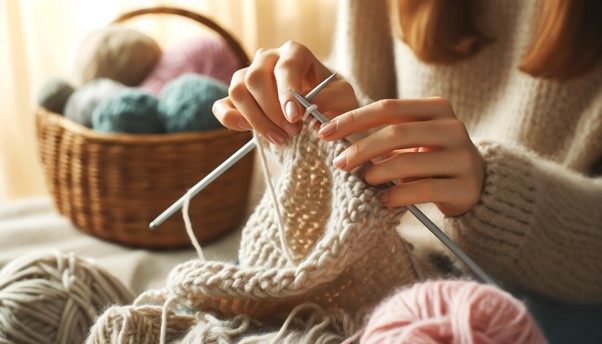Knitting for Beginners: Understanding Gauge and Tension

Ever started a knitting project only to realize your sweater is way too small or your scarf looks uneven? You are not alone! One of the biggest challenges for beginners is getting the right size, shape, and texture in their knitting. The key to fixing this? Understanding gauge and tension.
Gauge and tension control how tight or loose your stitches are, which directly affects how your final project turns out. If they are off, your knitted piece might not match the pattern’s measurements, leading to frustration and unexpected results.
But do not worry! With a few simple adjustments and some practice, you can achieve consistent, well-fitted projects every time.
In this guide, you will learn:
- What gauge is and why it matters
- How tension affects your knitting
- Simple ways to check and adjust both
By the end, you will feel more confident and in control of your knitting—no more guessing, just great results!
What is gauge in knitting?
Gauge is the number of stitches and rows within a four-inch square, ensuring a knitted piece matches the pattern’s size. It depends on yarn weight, needle size, and knitting style. To check the gauge, knit a swatch using the pattern’s specified yarn and needles. Count the stitches and rows—if they do not match, adjust by using larger needles for fewer stitches or smaller needles for more stitches.
How tension affects your knitting
Tension refers to how tightly or loosely a knitter holds and controls the yarn while making stitches. It plays a significant role in determining the final texture and elasticity of the knitted fabric. Even when using the same materials, two knitters may produce different results due to variations in tension.
Consistent tension is essential for achieving a smooth, even fabric. If the tension is too tight, the fabric may become stiff and difficult to work with. On the other hand, if tension is too loose, the stitches may lack structure, making the project appear uneven. Beginners often struggle with maintaining consistent tension, but practice and the proper techniques can help.
How to adjust gauge and tension: 4 simple ways
Achieving the correct gauge and maintaining steady tension requires practice and minor adjustments. Here are some effective strategies:
1. Change the needle size:
If the gauge does not match the pattern, switching to a different needle size can help. Larger needles create looser stitches, while smaller needles produce tighter stitches.
2. Modify yarn handling:
Adjusting how the yarn is held can significantly improve tension control. Wrapping the yarn around a finger or using specific techniques can help create uniform stitches.
3. Knit swatches regularly:
Making small test swatches before starting a project allows knitters to assess their gauge and tension. This step prevents potential sizing issues and ensures that the final piece meets the intended specifications.
4. Use stitch markers:
These helpful tools assist in keeping track of stitch counts and pattern repeats, making it easier to maintain even tension throughout the project.
Why gauge and tension are essential in knitting
Getting the right gauge and tension is key to making sure your knitted pieces turn out just right. Even minor adjustments can make a big difference in fit and overall look. Taking the time to check your gauge, practicing steady tension, and using helpful knitting accessories like blocking mats, measuring tapes, and row counters will make knitting more manageable and more enjoyable.
As you get more comfortable, you will develop a natural rhythm, and these steps will become second nature. With patience and practice, you will create beautiful, well-fitting projects that you can be proud of. So, keep knitting, keep learning, and most importantly, enjoy the process!


